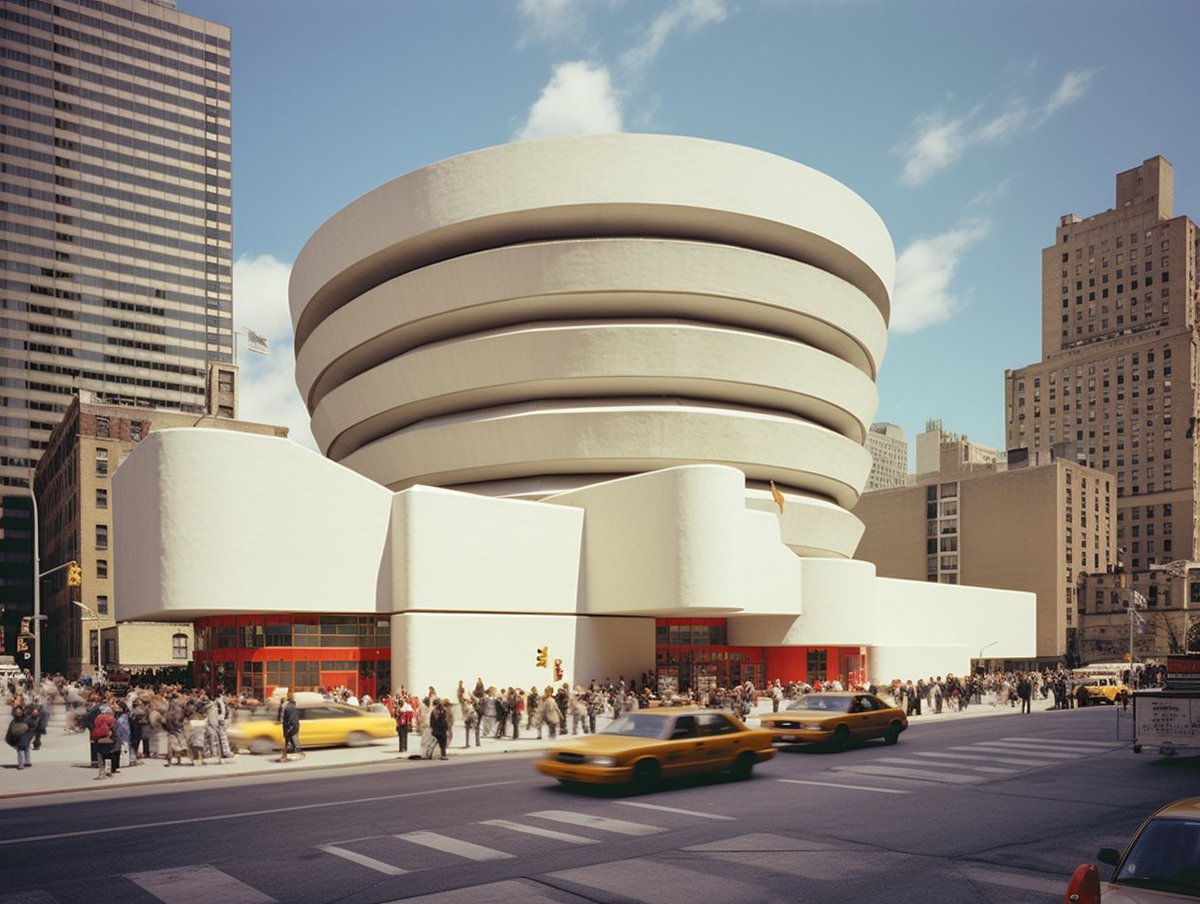
No longer active. Find me as @bildoperationen.bsky.social on Bluesky
How to get URL link on X (Twitter) App


 You' probably recognized the building depicted above as New York's Guggenheim Museum. However, it's far from an accurate representation of Frank Lloyd Wright's famous design. It’s faithful only in the most recognizable features, while all details are treated quite generously
You' probably recognized the building depicted above as New York's Guggenheim Museum. However, it's far from an accurate representation of Frank Lloyd Wright's famous design. It’s faithful only in the most recognizable features, while all details are treated quite generously

 In an age of networked online content, generic images are ubiquitous. No online text, no web page, and hardly any social media post seems complete without at least one accompanying image, even if it provides no additional information (of course, this thread also has images)
In an age of networked online content, generic images are ubiquitous. No online text, no web page, and hardly any social media post seems complete without at least one accompanying image, even if it provides no additional information (of course, this thread also has images)

 According to MJ, the image above, depicting an all-white 1950s nuclear »family enjoying a picnic,« represents the degree zero of »weirdness«. Pump up the algorithmically generated »weirdness« to 50, and the nostalgic vibe goes down a notch, but whiteness remains the default
According to MJ, the image above, depicting an all-white 1950s nuclear »family enjoying a picnic,« represents the degree zero of »weirdness«. Pump up the algorithmically generated »weirdness« to 50, and the nostalgic vibe goes down a notch, but whiteness remains the default

 What's most troubling about these models from a creative viewpoint seems to be their most interesting aspect from a scholarly perspective: they are extremely good at identifying, synthesizing, and reinforcing visual patterns and stereotypes. They're basically cliché detectors
What's most troubling about these models from a creative viewpoint seems to be their most interesting aspect from a scholarly perspective: they are extremely good at identifying, synthesizing, and reinforcing visual patterns and stereotypes. They're basically cliché detectors

 There’s a simple answer to that question: AI cannot produce art, but of course it can be used to produce art – like (almost) anything else. Since Duchamp, Kaprow, and Sturtevant, anything can become art: a ready-made object, a social event, even a copy of someone else's work
There’s a simple answer to that question: AI cannot produce art, but of course it can be used to produce art – like (almost) anything else. Since Duchamp, Kaprow, and Sturtevant, anything can become art: a ready-made object, a social event, even a copy of someone else's work

 Popular versions of image forensics have been a staple of social media for some time: People just love to speculate about whether or not a widely shared image has been manipulated, and to look for hidden clues of tampering. That’s what I call #WildForensis
Popular versions of image forensics have been a staple of social media for some time: People just love to speculate about whether or not a widely shared image has been manipulated, and to look for hidden clues of tampering. That’s what I call #WildForensis https://twitter.com/bildoperationen/status/1537749809775403012This one from January speculates on different business models for #VirtualImageArchives and the further platformization of multimodal AI
https://twitter.com/bildoperationen/status/1617248299555381248

https://twitter.com/mrjonfinger/status/1633672629549936640This sets them apart from a whole tradition of computer-generated images: In what @bernardionysius calls the »scopic regime of computation,« computers were used to simulate three-dimensional worlds made of points, lines, and vectors that could be captured by virtual cameras

 One main characteristic of this AI style seems to be what @pookerman has aptly called »fluffy glamour glow«: The default mode of these images is to shine and sparkle, as if illuminated from within. These are images that radiate
One main characteristic of this AI style seems to be what @pookerman has aptly called »fluffy glamour glow«: The default mode of these images is to shine and sparkle, as if illuminated from within. These are images that radiate 

https://twitter.com/GanWeaving/status/1632622074157039616Interestingly enough, #Midjourney is quite competent in imitating the style of contemporary artists maybe lesser known to a general public, e.g. here Peter Doig ...

https://twitter.com/bildoperationen/status/1627242486551703554Much of the discussion around AI-generated images has involved questions of style, and for good reason. »In the style of ...« is maybe the most common phrases used in prompts, as #DallE, #Midjourney, and #StableDiffusion promise to produce images in any possible style

https://twitter.com/keithscho/status/1612835517376364544For me, these »films that don't exist« are more than just a nice gimmick; the intense reactions they evoke tell us something about the cultural moment we live in and our relationship to the images of the past 2/15 nytimes.com/interactive/20…
